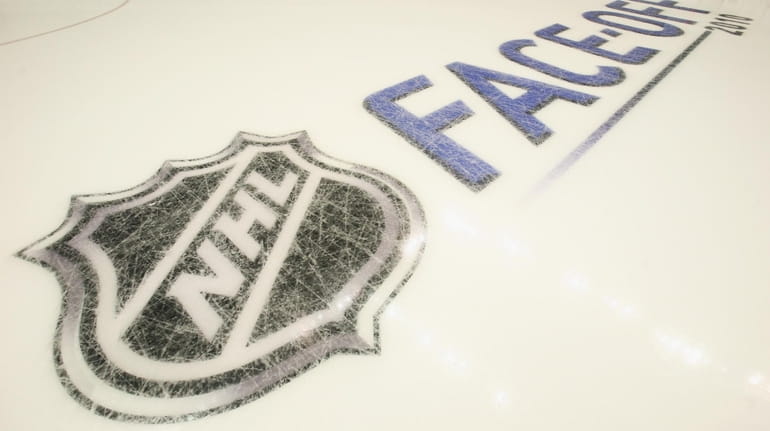NHL Board of Governors approves 56-game regular season beginning Jan. 13

NHL logos are etched into the ice prior to the game between the Pittsburgh Penguins and the Philadelphia Flyers at the Consol Energy Center on October 7, 2010 in Pittsburgh, Pennsylvania. Credit: Getty Images/Bruce Bennett
The NHL Board of Governors and the NHL Players’ Association executive board have voted to approve a truncated 56-game regular season beginning Jan. 13, with the schedule to be released either Tuesday or Wednesday.
But there still are uncertainties.
For instance, during its Sunday meeting, the Board of Governors tabled the issue of where the NHL’s seven Canadian teams can play, pending further discussion with provincial health and government officials. British Columbia, in particular, has indicated thus far that it is not willing to have teams travel in and out of the province, which would force the Canucks to find a temporary home or force the Canadian teams to play in one hub city.
The San Jose Sharks reportedly will conduct their training camp and start the season in Arizona because of Santa Clara County restrictions to combat the COVID-19 pandemic.
Also, the start of the regular season could be pushed back one to two weeks based on rising COVID-19 numbers.
The plan is to play games in the majority of home arenas despite the expectation that no fans will be allowed in most buildings, at least to start the season. But the NHL and NHLPA, in their joint announcement on Sunday, noted that games could be moved to neutral sites if necessary.
The NHLPA’s executive board met on Friday night after the sides reached a tentative agreement earlier that day.
The return-to-play plan for the 31 teams involves four divisions, including one for all seven Canadian teams, with all play within the division. The Islanders, Rangers, Devils, Bruins, Sabres, Flyers, Penguins and Capitals will comprise the East Division.
The top four teams in each division will qualify for the playoffs, with intradivisional play in the first two rounds. The four teams that advance to the league semifinals will be seeded based upon their regular-season point total.
Training camps will open Jan. 3 except for the seven teams that did not participate in the postseason — the Devils, Ducks, Kings, Senators, Sabres, Red Wings and Sharks. They can begin practicing Dec. 31.
Teams can invite 36 skaters and an unlimited number of goalies to camps. The roster maximum remains 23 players, but there also will be a taxi squad of four to six players that will travel and practice with the team. Teams must have at least three goalies, including the taxi squad.
The opt-out deadline for players is Thursday for the teams that did not qualify for the postseason and Sunday for the other 24 teams.
Group 2 restricted free agents, such as the Islanders’ Mathew Barzal, must be signed by Feb. 11 in order to play this season.
The trade deadline will be April 12, the regular season will end on May 8 and the last possible day for the Stanley Cup Final will be July 15.
The NHL will conduct its expansion draft on July 21 — the Seattle Kraken will join as the 32nd franchise in 2021-22 — and the NHL Draft will be held July 23-24. The free-agent market will open on July 28.

